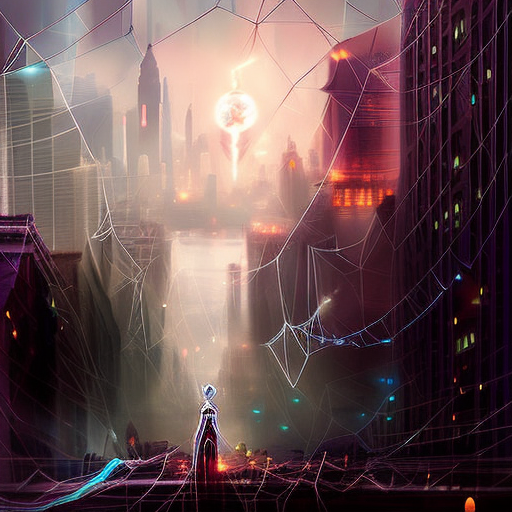One-line Summary:
In “Children of Time,” a thought-provoking science fiction novel by Adrian Tchaikovsky, humanity’s search for a new home leads to an unexpected encounter with an evolved species on a distant planet.
Exploring a New World:
As Earth faces its demise, a group of scientists embarks on a mission to find a habitable planet for humanity’s survival. Their search leads them to the planet of Kern’s World, where they plan to introduce a nanovirus to accelerate the evolution of a selected species. However, their plans go awry when an accident causes the nanovirus to infect a different species than intended: the humble Portiid spiders.
The story unfolds in parallel narratives, alternating between the perspectives of the human survivors aboard the spaceship Gilgamesh and the evolving Portiid spiders on Kern’s World. Tchaikovsky skillfully weaves together these two storylines, exploring the challenges faced by both species as they adapt to their changing circumstances.
The Evolution of Spiders:
The Portiid spiders, initially small and unassuming, gradually evolve over generations due to the nanovirus. They develop intelligence, complex social structures, and even a rudimentary form of language. Tchaikovsky delves into the intricacies of spider society, highlighting their struggles for power, the development of religion, and the impact of their newfound intelligence on their interactions with other creatures on the planet.
The author also explores the concept of time and the different perspectives it offers. While humans experience time linearly, the spiders’ shorter lifespans allow them to witness the rapid evolution of their species. This unique perspective adds depth to the narrative and prompts reflection on the nature of existence and the passage of time.
Clashes and Cooperation:
As the story progresses, the paths of humans and spiders inevitably cross. The human survivors, led by Holsten Mason, face their own challenges as they navigate the complexities of life aboard the Gilgamesh. Meanwhile, the spiders encounter other species on Kern’s World, including the ant-like creatures known as the Ants, with whom they form an uneasy alliance against a common enemy.
Tensions arise as misunderstandings and conflicts occur between the two species. However, Tchaikovsky also highlights moments of cooperation and understanding, emphasizing the potential for mutual growth and coexistence. The author skillfully explores themes of empathy, communication, and the consequences of our actions, challenging readers to consider the impact of our interactions with other species.
Key Takeaways:
- Adaptation and evolution are powerful forces that shape the destiny of species.
- Communication and empathy are essential for fostering understanding and cooperation between different species.
- The passage of time can offer unique perspectives on existence and the consequences of our actions.
“The universe is a vast and wondrous thing, and we are so small within it. To deny ourselves the knowledge of what is beyond us, whether it is the stars or the spiders, is to deny ourselves the truth of our own existence.”
In “Children of Time,” Adrian Tchaikovsky delivers a thought-provoking exploration of evolution, communication, and the potential for coexistence between species. Through the parallel narratives of humans and spiders, the novel challenges readers to consider the consequences of our actions and the importance of empathy in a rapidly changing world.












